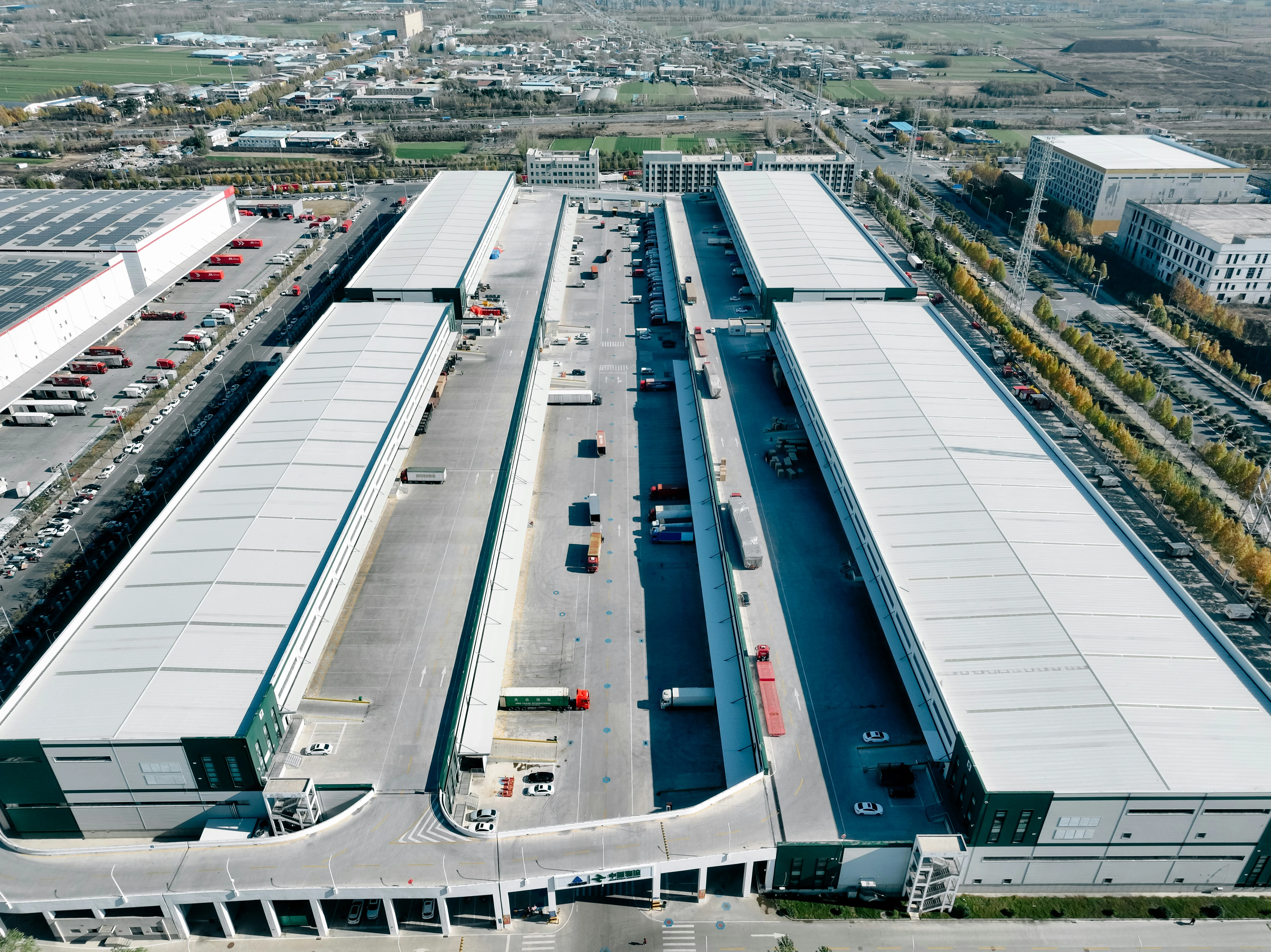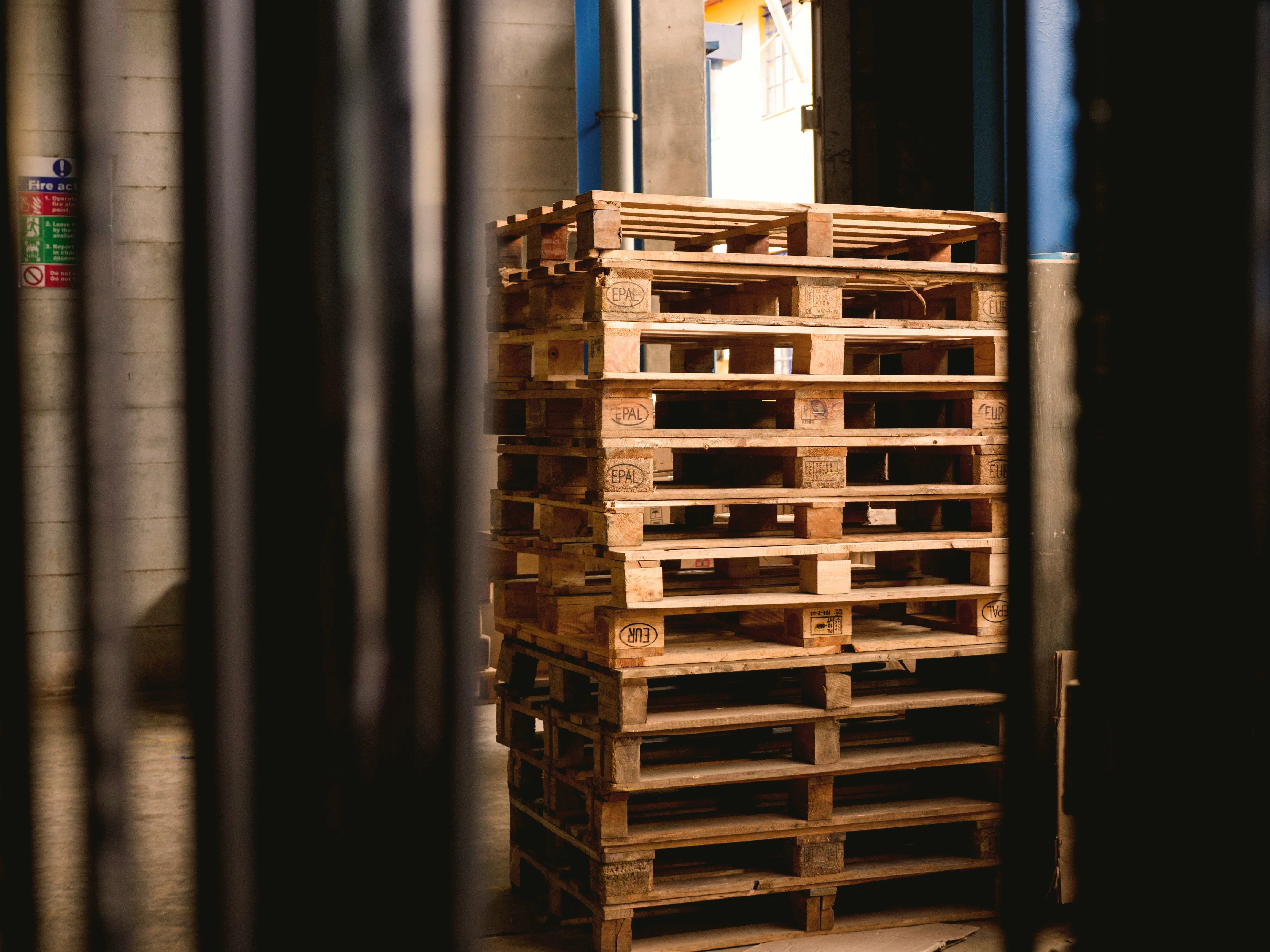Pallet storage costs can vary widely and impact your overall 3PL expenses. This guide is for DTC founders, retail marketers, and procurement pros comparing 3PL pallet storage pricing, workflows, and SLAs. Learn what drives costs, how to evaluate service quality, and which risks to watch before signing your next warehousing contract.
.webp)
What Is Pallet Storage and When Should You Use It?
Pallet storage is a foundational service within warehousing and 3PL operations that involves safely storing palletized goods in a designated facility. Pallets serve as a standardized unit load, allowing for more efficient inventory management, handling, and transportation. This type of storage is essential when handling large volumes of bulk inventory or maintaining stock on hand for future distribution.
Pallet storage is particularly useful when:
- You have bulk inventory requiring secure, organized holding prior to fulfillment or further processing.
- You need to manage seasonal stock fluctuations, storing excess inventory during off-peak months for future use.
- Your ecommerce fulfillment operation requires overflow storage during demand surges, particularly during holidays or promotional events.
- You’re running kitting or assembly projects, staging palletized components before they move into packaging or bundling workflows.
Typical Customers Needing Pallet Storage
- Manufacturers storing raw materials, components, or finished goods en masse.
- Subscription box brands and DTC companies with seasonal peaks or product launches that require flexible, scalable storage capacity.
- Large retailers and wholesalers managing store or distribution center allocation.
- Marketing teams staging physical kits or promotional materials involving multiple SKUs per pallet.
If you’re evaluating pallet storage in Atlanta, take a closer look at All Points’ warehousing & distribution capabilities, which offers flexible, scalable pallet storage integrated with kitting, ecommerce fulfillment, and printing services.

Pallet Storage Workflow: From Receiving to Dock-to-Stock
A reliable pallet storage operation begins the moment your goods arrive at the warehouse. Understanding the standard operating procedures (SOPs) ensures smoother collaboration and accountability between you and your 3PL provider.
1. Pallet Receipt & Inspection
The first step involves scheduling a receiving appointment, checking carrier credentials, and physically unloading pallets. Upon arrival, pallet condition and correct quantity are verified to ensure no transit damage or discrepancies. Initial inspections help identify potential issues before the goods enter active inventory.
2. Barcode Scanning and Inventory Logging
Each pallet is scanned with barcode or license plate technology linked to the warehouse management system (WMS). This step updates real-time inventory counts and associates the pallet with SKUs as per the advanced shipping notice (ASN) or packing list. Discrepancies are flagged and resolved promptly.
3. Motion to Storage Location and Slotting
Pallets are moved to assigned storage zones, which may include bulk floor stacking, racking systems, or climate-controlled areas depending on product requirements. The WMS records the pallet location to maintain accurate inventory tracking and streamline future retrievals.
4. Ongoing Inventory Accuracy Checks and Cycle Counts
Periodic cycle counts and bin audits maintain inventory accuracy, minimizing errors that lead to picking mistakes or fulfillment delays. Variances trigger investigations and root cause analyses to continuously improve data integrity.
5. Load-out & Staging for Outbound Shipments
When orders come in, pallets are picked, staged, labeled with pick tickets and bills of lading (BOLs), and loaded for carrier pickup with timestamped proof of shipment. Efficient staging and load-out reduce dwell time and expedite fulfillment timelines.
When your pallet storage operates alongside kitting, ecommerce fulfillment, or print services, handoffs are seamless and cost-effective with no need for cross-dock transfers or multi-vendor logistics. For brands requiring kit assembly or promotional bundles, explore our kitting and product assembly services to integrate storage and assembly under one roof.
Pallet Storage SLA & KPI Benchmarks
.webp)
Why Do These SLAs Matter?
- Inventory Accuracy minimizes picking errors and costly reshipments arising from stock discrepancies. High accuracy safeguards brand reputation and retailer compliance.
- Dock-to-Stock Time measures the speed of moving inbound goods into sellable inventory. Faster dock-to-stock times accelerate replenishment and reduce stockouts.
- On-time Pick & Ship ensures customer orders are fulfilled according to schedule, preventing penalties or missed sales windows.
- Order Cycle Time impacts inventory turnover rates and cash flow. Shorter cycles improve agility and lower carrying costs.
When negotiating your pallet storage contract, insist on clear SLA definitions, measurement methods, reporting cadence, and remedies for SLA breaches. Avoid vague “industry standard” language without specifics or audit rights.
Pricing Drivers: What Moves Pallet Storage Costs Up or Down?
Understanding what factors influence pallet storage pricing empowers brands to negotiate smarter contracts and optimize cost structures.
1. Base Storage Rate
Typical U.S. pallet storage pricing ranges from $15 to $25 per pallet per month for standard dry storage. Rates differ based on:
- Region: Urban centers and high-demand markets typically cost more.
- Space Type: Climate-controlled or hazardous materials storage commands premiums.
- Contract Length: Long-term commitments often secure discounted storage fees.
2. Handling Fees
Most warehouses charge separately for pallet movements:
- Pallet-in / pallet-out fees range between $4 and $8 per move.
- Additional services like inbound labeling, stretch-wrapping, or pallet reconditioning incur extra costs.
3. Volume and Term Discounts
Higher pallet volumes and longer contract terms frequently yield lower rates and waived handling fees. Negotiating minimum volume commitments or guaranteed throughput helps stabilize pricing.
4. Optional Add-ons
- Climate Control: Temperature- and humidity-regulated storage to protect sensitive goods.
- Insurance: Enhanced coverage for high-value inventory beyond basic warehouse liability.
- Palletization Services: Pallet building, modification, or decomposition services.
5. Seasonality and Overflow Storage
Temporary storage demands during peak seasons or promotional surges typically carry premium short-term rates. Flexible appointment scheduling and capacity allocation during these periods add to costs.
6. Inventory Velocity and SKU Complexity
High-turnover SKUs or pallets with mixed content require additional labor for picking and inventory management, increasing overall service charges. Uniform, single-SKU pallets with low move frequencies are less costly to store and handle.
For context and additional tools, brands can review external market resources like:
- Warehousing and Fulfillment Pallet Storage and Pricing Guide
- Fulfyld Pallet Storage Cost Calculator
- Raymond West Pallet Storage Cost Calculator
- Miami Drayage Insight on Pallet Storage Costs
- Kenco Group Pricing Best Practices
Long-Term vs Overflow Storage: Pricing and SLA Differences
Aspect Long-Term Storage Overflow Storage Best for Maintaining steady inventory and predictable turns Managing seasonal spikes, PO timing gaps, promotions Pricing Lower per-pallet monthly rates; less frequent handling fees Premium pricing for short-term flexibility and rapid access SLAs Focus on inventory accuracy, consistent cycle counts Emphasize fast dock-to-stock, flexible carrier scheduling Risks to Monitor Fees on slow-moving stock, aging inventory tie-up Potential space constraints, missed appointments, expediting costs
A skilled 3PL should incorporate both models under a single agreement with transparent pricing tiers and defined triggers for peak capacity usage.

Common Risks & How to Mitigate Them in Pallet Storage Contracts
Risk Description Mitigation Strategy Hidden fees and unclear terms Unexpected charges for pallet moves or storage Insist on clear, line-item pricing with published fee schedules and caps Inventory inaccuracies Picking errors, chargebacks, lost revenue Require strict KPIs, regular cycle counts, root-cause analysis, and audit rights Slow dock-to-stock Fulfillment delays, expedited freight costs Negotiate dock-to-stock SLAs with penalties and escalation paths Inadequate storage conditions Product damage, regulatory non-compliance Specify environmental controls and storage protocols upfront; verify facility certifications Poor communication at peak times Appointment no-shows or capacity shortages Agree on peak season planning, reserved appointment windows, and proactive status updates
The Atlanta Advantage: Why Location Matters for Pallet Storage
Atlanta is a premier logistics hub and strategic distribution point for brands targeting national U.S. markets.
- Reach: Approximate 2-day ground transit access to nearly 80% of the U.S. population significantly reduces reliance on costly expedited shipping.
- Cost Savings: Central location lowers inbound and outbound freight spend, decreasing landed costs and improving fulfillment economics.
- Full-Service Integration: Combining pallet storage with kitting, ecommerce fulfillment, and printing under one roof minimizes handoffs and transit times.
- Supply Chain Agility: Proximity to major highways, rail lines, and airports supports flexibility in scaling and diversifying distribution channels.
All Points leverages this Atlanta geographic advantage, enabling brands to reduce total logistics costs while improving service reliability and speed.
What You Get With All Points
- Experience & Trust: A family-owned Atlanta 3PL since 1995 delivering end-to-end solutions — pallet storage, kitting, ecommerce fulfillment, and printing.
- Operator-Grade Execution: Precision SOPs managing receiving, putaway, and inventory with real-time visibility and ≥ 99% accuracy.
- Integrated Services: On-site kitting and print-on-demand capabilities that support seamless brand presentation and packout customization, including luxury and automotive clients like Porsche.
- Transparent Pricing & Flexible Contracts: Clear fee structures for storage, pallet movements, and project work with flexible terms to support both long-term and overflow storage needs.
- All Under One Roof: Direct linkage between warehousing, kitting, fulfillment, and printing eliminates friction, shortens timelines, and reduces freight spend.
Explore the depth of services at:
Get a pallet storage quote today and discover the All Points advantage.
Get a kitting quote Talk to an Atlanta 3PL expert Download the 3PL Guide
FAQ
What are typical pallet storage costs?
Standard dry pallet storage in the U.S. typically ranges from $15 to $25 per pallet per month, with pallet-in/out handling fees averaging $4 to $8 per move. Additional costs arise for climate control, re-palletization, insurance, or seasonal surcharges. Final rates depend on your location, contract length, volume, SKU complexity, and fulfillment needs.
What SLAs should I expect from my 3PL?
Aim for inventory accuracy ≥ 99%, dock-to-stock times under 8 hours (ideally), on-time pick and ship rates ≥ 98%, and order cycles within 24–48 hours. Ensure your contract defines measurement criteria, reporting frequency, and outlines remedies for non-compliance.
How does All Points’ Atlanta location improve fulfillment speed?
Georgia’s logistics hub enables fast ground transit covering nearly 80% of the U.S. population within 2 days, minimizing air freight reliance. This speeds replenishment and lowers landed costs. Having pallet storage, kitting, and fulfillment all onsite eliminates handoffs and streamlines your supply chain.
What is the difference between long-term and overflow pallet storage?
Long-term storage is designed for steady-state inventory requiring predictable turns and comes with lower monthly storage fees. Overflow storage addresses short-term demand spikes with premium rates focusing on fast access and flexible scheduling.
.webp)
Conclusion
Pallet storage costs vary by location, volume, and service levels. This guide helps you navigate pricing, SLAs, and workflows to optimize 3PL partnerships. Learn how Atlanta’s All Points integrates storage with fulfillment and kitting for cost-effective, reliable logistics tailored to your brand’s needs.




.webp)
.webp)
.webp)
.webp)
.webp)
.webp)

